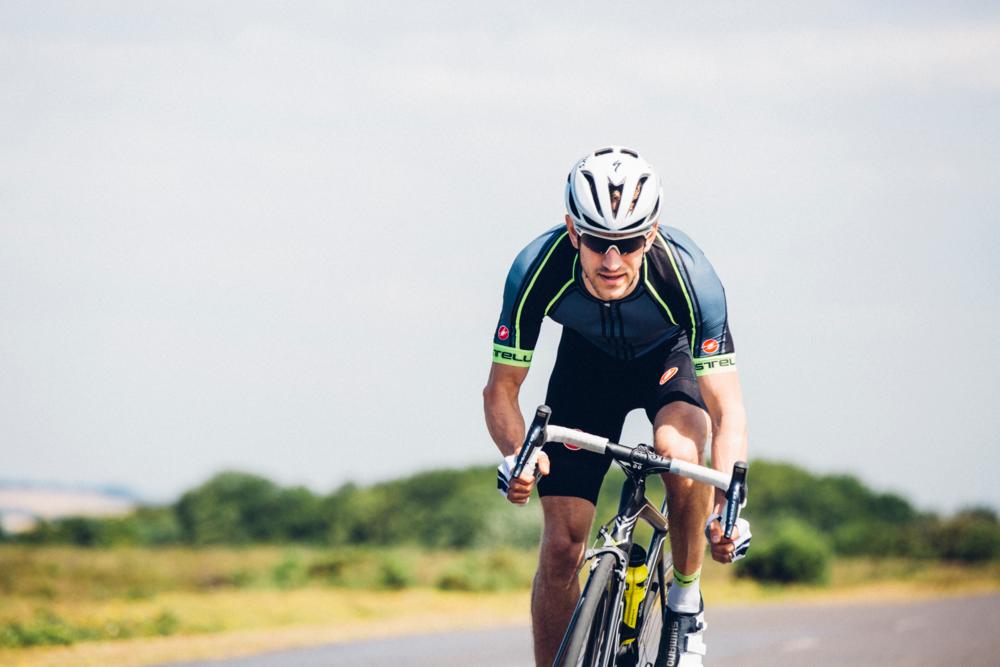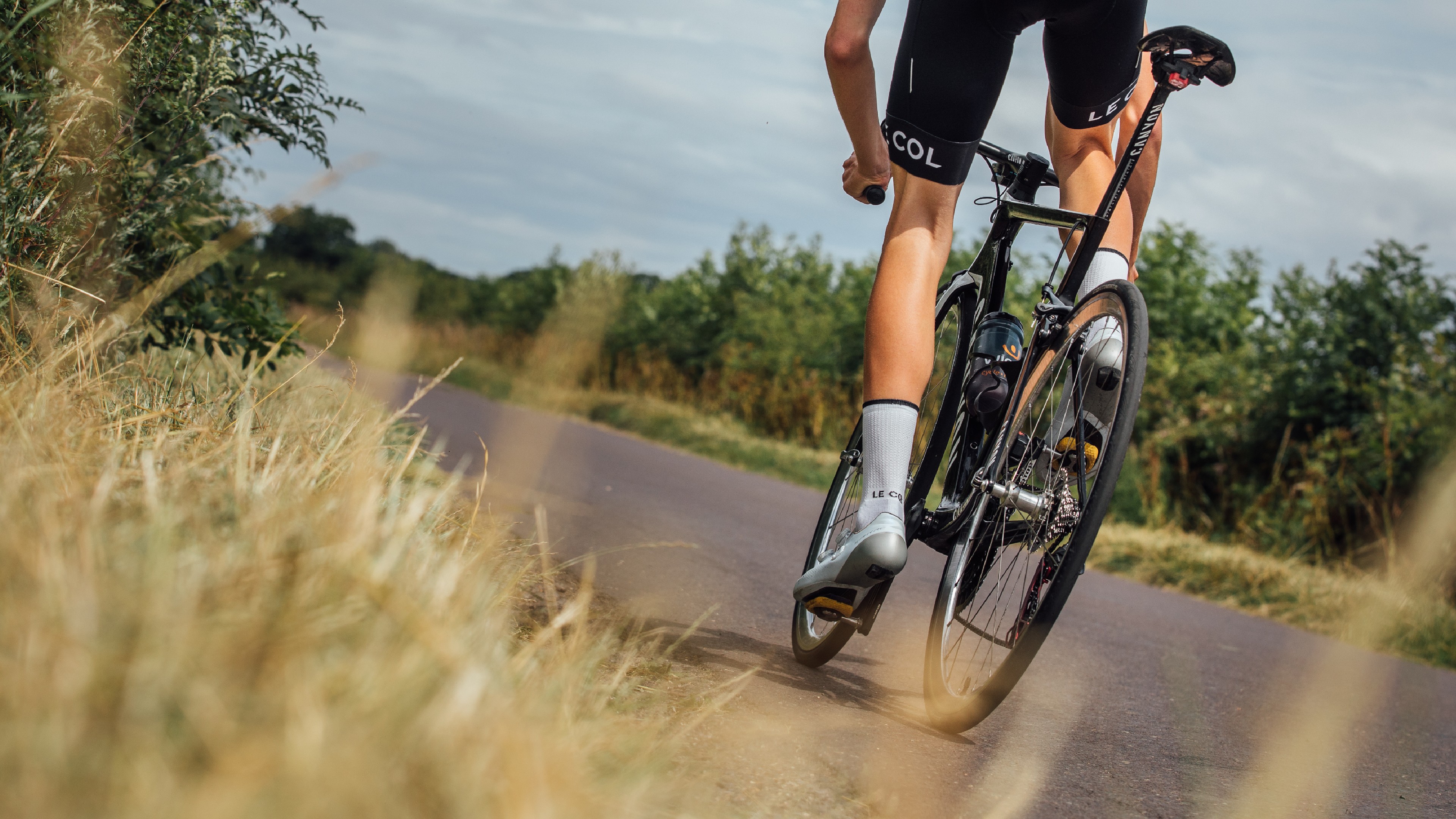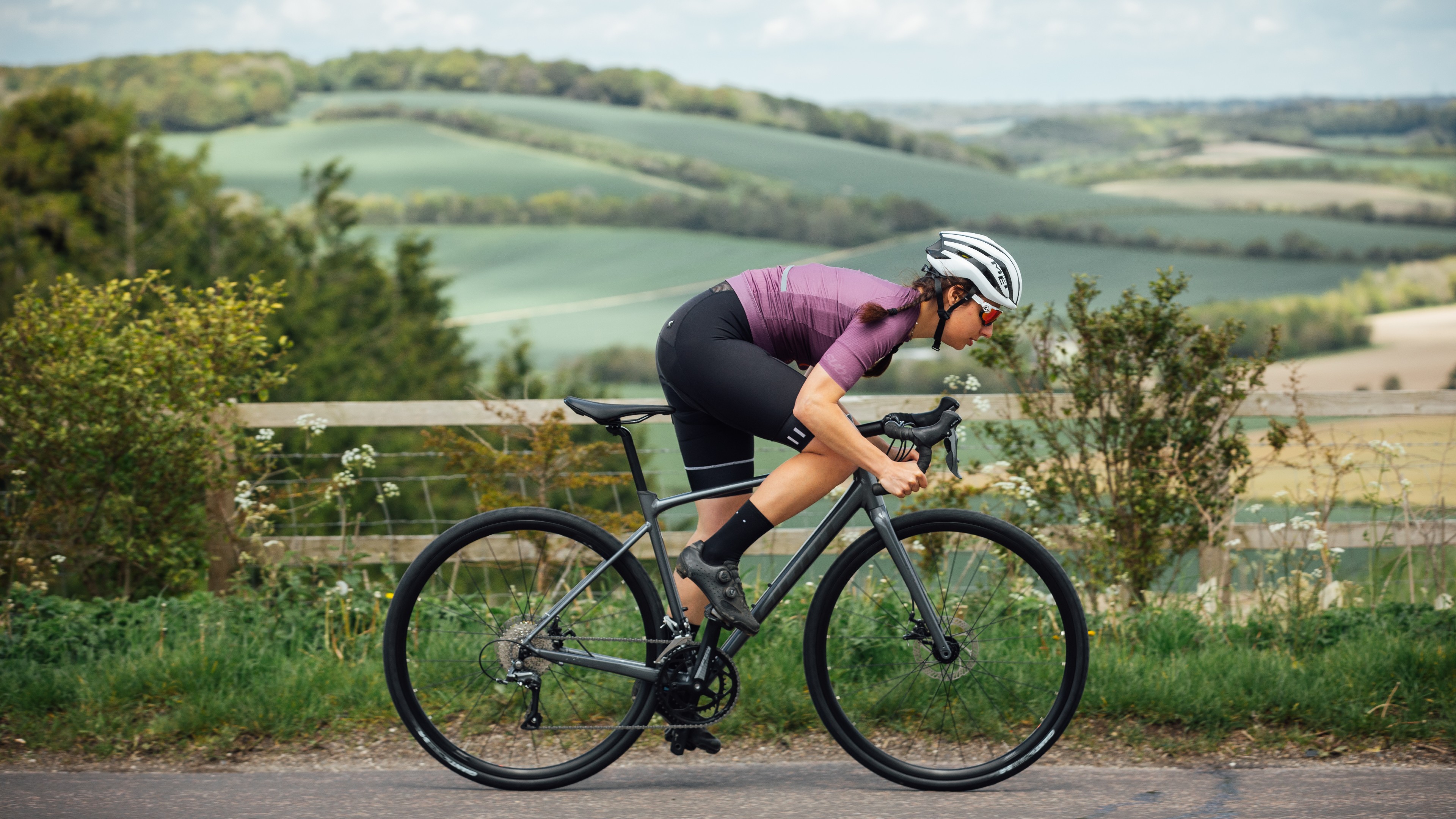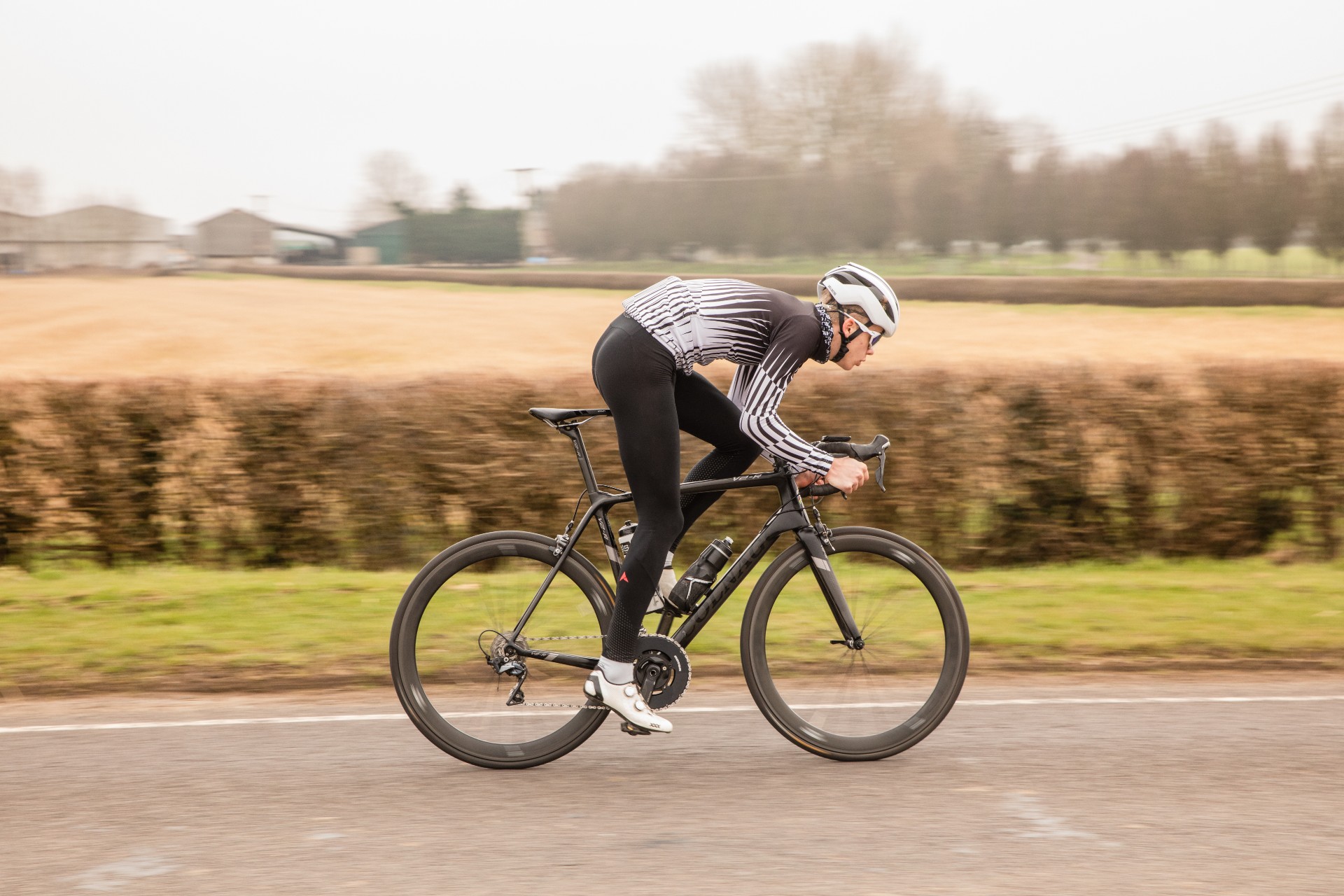How to train like a sprinter: essential tips to improve your top-end speed
Cycling coach Zach Nehr outlines key sessions which could help supercharge your sprint

Sprint training is not reserved for the Mark Cavendish’s or Andre Greipel’s of the world – everyone can benefit from sprint training, from first-time racers to seasoned professionals.
When it comes to racing, a strong sprint is about much more than just winning or losing at the line. It can also help you close gaps, bridge across to the break, or win the holeshot.
Across cycling disciplines, sprint power is one of the most important attributes a rider can have. And in this article, we’re going to show you how to train like a sprinter. Whether you want to win your local crit, set a new PR, or break a thousand watts for the first time, these sprint training sessions are designed for you.
Sprint training is about much more than pushing hard on the pedals – it is about pedaling fast, being efficient, maintaining an aerodynamic position, and using your upper body to deliver all the power to the pedals. There is also a big difference between fresh sprints and fatigued sprints, such as a match sprint on the track versus the final 200m of Paris-Roubaix.
Are some people more naturally gifted than others?
Anyone can become a solid sprinter; though not everyone can be the best in the world. Pure sprinters have high ratios of fast-twitch muscle fibres which are fast and powerful, but are also quick to fatigue. Track sprinters are the purest sprinters in cycling, whereas a rider like Mark Cavendish is a road racer-sprinter hybrid. That’s because Cavendish still needs to be able to race five hours a day during the Tour de France, and then have enough of a sprint left to win on the Champs-Élysées.
Regardless which way your natural physiology leans, you can always improve - it just takes training.
Get The Leadout Newsletter
The latest race content, interviews, features, reviews and expert buying guides, direct to your inbox!
These workouts will cover the spectrum of pure sprinter to road racing superstar. From over-geared sprints, to high-intensity Tabatas and heavy gym work, this is how to train like a sprinter.
POWER STARTS

I’m sure you’ve heard of this one before: power starts. These intervals simulate a standing start on the track, or powering off the line in a massive gear. This will help you in many different race situations such as sprinting out of a corner, churning big power up a climb, or going for the holeshot in cyclocross.
Power starts will also help you develop more fast-twitch muscle fibres by recruiting them in each low-cadence pedal stroke. Fast-twitch muscle fibres are what make sprinters who they are, as these are the muscle fibres that allow your legs to be explosive for a short period of time. The best way to increase the strength and ratio of your fast-twitch muscle fibres is to recruit as many of them as possible, which means squeezing your leg muscles and pushing as hard as you can during a sprint interval.
How to do it:
After a 10-minute warm-up, get ready for 6-8 over-geared power starts. Roll down to less than 10kph, and have your gearing near the bottom of the rear cassette. For intermediate riders, try the 53x16, for example. Experienced riders can use the 53x14 or 53x13.
Now sprint as hard as you can, making sure to get on top of the gear as quickly and efficiently as possible. Use your upper body and core to stabilise your frame, and sprint for 20 seconds before letting off the gas. The first few pedal strokes will feel very slow and hard, but this is the key moment of this exercise which recruits and builds your fast-twitch muscle fibres.
RACE SPEED SPRINT INTERVALS

Adding in lead outs
If you are lucky enough to have some other sprint-minded riders around you, then you can practise lead-outs.
A lead-out is when a team or teammate sacrifices themselves for their team’s sprinter by upping the pace in the final kilometres with their sprinter on their wheel. This put other riders and teams on the back foot, forcing them to move up in the wind or lose their positioning.
To practice lead-outs, ride 2-5km flat-out with each rider peeling off after a 500m turn on the front. This will keep the speed incredibly high, all the way until only the sprinter is left, who can then launch their sprint for the town sign.
The next set of sprint intervals is a favourite of Mark Cavendish, ‘The Manx Missile,’ and arguably the best sprinter in cycling history. These intervals are also known as ‘Race Speed’ intervals, or sprinting from a fast pace.
In a race situation, it is likely you will be sprinting from a relatively high speed as the peloton winds it up in the final kilometer. To succeed in this type of sprint, you need to have excellent timing, a high-speed kick, and fast leg speed. Pure power won’t do it alone.
Cavendish’s sprint workout is one that comes at the end of a long ride – just as a sprint would at the end of a five-hour Tour de France stage. To simulate race-like conditions, Cavendish will roll down a short descent to gather speed, before launching a full gas, over-distance sprint of >300 meters.
The high speed simulates a lead-out (without sapping his legs on a training ride), whilst the over-distance has more of a training effect by pushing your body past its limits. By sprinting long, you are really stretching your sprint muscles, especially your fast-twitch muscle fibres. This will help increase your muscle’s strength and endurance, giving you the extra edge in your next sprint.
40/20s – TABATA-STYLE SPRINT EFFORTS

Training zones
We've used 'training zones' to explain how hard your efforts should be during training, we've gone into detail about these in our dedicated article on cycling training zones.
You can train in zones using power, heart rate, or feel.
If you use power, your zones will be set as a percentage of your functional threshold power (FTP). If you use heart rate, they'll be based on a percentage of your threshold heart rate (THR). Using feel is the simplest gauge, that's based on 'rate of perceived exertion' (RPE), where 0 is resting and 10 is as hard as you can go.
So far, we’ve been focusing on maximum effort sprint intervals, either from a standing start or high initial speed. While those interval sessions are great for training your fast-twitch muscle fibres, they aren’t entirely realistic.
In most race scenarios – especially race-winning ones – you are going to be extremely fatigued coming into the final sprint. Whether it is at the top of a climb, or after a 100km road race, you are going to hit the flamme rouge with lots of lactate and fatigue built up in your legs. To train your race-winning sprint, you need to train your fatigued sprint, that is, the sprint that you have left after hour(s) of hard riding.
‘40/20s’ have quickly become a household name in cycling – they are a style of super high-intensity, on/off style of intervals also called “Tabatas.” During these intervals, you will push yourself to the limit, every minute, for up to 10 minutes. Tabatas are effectively repeated sprints, which is the perfect simulation for technical crits, cyclocross or mountain bike racing, or explosive breakaway riding.
Many say that Tabatas is the most efficient style of training, as just one Tabata workout a week can increase your FTP, VO2max, fast-twitch muscle fibres, and maximum sprint power.
Here’s how to do 40/20s:
After a 10-minute easy warm-up, you can begin your first set of 40/20s which involve 40 seconds of near-sprints, followed by 20 seconds of Zone 1 recovery. You will be in Zones 5 or 6 during these 40-second sprints, which means they will hurt…a lot.
But you only have to endure the pain for a few minutes at a time, or 40 seconds at a time in reality. Beginner riders should aim for 3 sets of 5-minute 40/20 intervals (i.e. 5 rounds of 40/20s in one set), while advanced riders can try 3-4 sets of 10-minute rounds. These intervals are best done on the indoor trainer or a steady climb with few distractions.
You can do these intervals by feel, or aim for 125% FTP during the 40 seconds ‘on,’ and 50% FTP during the 20 seconds ‘off.’
Should you include gym work?

Gym sessions come in many different forms, and you don’t necessarily need to be squatting 200kg to be a good sprinter. Many use plyometrics, yoga, core, and stability training to improve muscle strength including cycling-specific movements that increase muscular strength and overall balance.
Track cyclists are the most committed to gym life, and with some, you can more often find them at the gym rather than the velodrome. Jess Varnish – a multi-time World Championship medalist on the track – detailed her training program to Cycling Weekly several years ago (before her retirement), describing ‘a week in the life’ of a track sprinter.
When it came to weight training, Varnish talked about doing heavy deadlifts, upper body lifting, and more lower body strength exercises, in an all-round gym program that took care of every muscle from head to toe.
Varnish also mentioned Pilates as more of a prehab routine, as she was recovering from a back injury. The next day, Varnish was back in the gym for plyometrics, an explosive style of strength training that uses fewer weights (if any), and more quick running and jumping movements.
Sprinters often train with heavy weights because of the muscle-tearing force that they put through the pedals in a standing start or match sprint. The strain under which their muscles operate is enormous, and that’s why sprinters train under maximal force both in the gym and on the track. Plyometric training is specifically designed to develop fast-twitch muscle fibres which is one of the defining characteristics of top-tier sprinters.
The sprinter's training week
In order to train like a sprinter, you need to put it all together, and that leads us to the training plan of a sprinter. These riders are sometimes known for long and lazy rest periods; and deservedly so. Anaerobic sprints are the most taxing efforts we could possibly do on the bike, completely draining our energy systems in a matter of seconds. In order to get stronger, you need proper recovery, and that’s why sprint workouts have much more recovery than, say, a set of Sweet Spot intervals or a Tempo workout which promote endurnace.
Within a sprinter’s training plan, there is a balance between hard work and hard rest that leads to the best possible muscle and fitness adaptation. That means two hard days per week, and sometimes three, but no more. Gym days are as hard as 40/20 days, and recovery rides mean 50w to the café and back.
In a snapshot of a week, here is what it takes to train like a sprinter.
Monday: Rest
Tuesday: Power Starts
Warm-up: 10min Zone 1 building to Zone 2
Main Set: 8x20-second over-geared sprints from a near-standstill / 5min recovery at 50% FTP (or <80% THR, or 1 out of 10 RPE)
Cool-down: 10min Zone 1
Wednesday: Morning gym session: heavy lifting for upper and lower body (deadlifts, squats, lunges, bench press, and core)
Afternoon: 30-60min recovery ride (<60% FTP or <80% THR)
Thursday: 60min Zone 2 endurance ride
55-75% FTP (or 81-89% THR, or 2-3 out of 10 RPE)
Friday: Morning gym session: plyometrics
Afternoon: 30-60min recovery ride (<60% FTP or <80% THR)
Saturday: Zone 2 endurance ride with Race Speed Sprints (3-4 hours at 55-75% FTP)
Warm-up: 10min Zone 1 building to Zone 2
Main Set: 3-4 hours at 55-75% FTP (or 81-89% THR, or 2-3 out of 10 RPE). In the final 20 minutes, do 3x20-second Race Speed sprints. Build up speed (<40kph) on a downhill, and then launch a 300-meter sprint. Take 5 minutes of recovery at 50% FTP (or <80% THR, or 1 out of 10 RPE) in between each sprint.
Cool-down: 10min Zone 1
Sunday: 90min recovery ride (<60% FTP or <80% THR)
It is recommended to rest every fourth week (i.e. three weeks of training followed by one rest week, on repeat) to give your body the time it needs to adapt to the training. Remember that rest is just as (if not more important than) hard training, as this is the time when your muscle fibres heal, your fitness improves, and your muscles actually get stronger.

Thank you for reading 20 articles this month* Join now for unlimited access
Enjoy your first month for just £1 / $1 / €1
*Read 5 free articles per month without a subscription

Join now for unlimited access
Try first month for just £1 / $1 / €1
Zach is a freelance writer, the owner of ZNehr Coaching, and an elite-level rider in road, track, and Zwift racing. He writes about everything related to bikes, from product reviews and advertorials, to feature articles and pro data analytics in Power Analysis articles. You can find his articles everywhere from Cyclingnews and TrainingPeaks, to Velonews, CyclingTips, and Bicycle Guider.
After earning a Bachelor’s Degree in Exercise Science at Marian University-Indianapolis, Zach discovered a passion for writing that soon turned into a full-fledged career. In between articles, Zach spends his time working with endurance athletes of all levels at ZNehr Coaching. After entering cycling at age 17, Zach went on to have a wonderful road racing career that included a Collegiate National Time Trial Championship and a 9th place finish at the US Pro National Time Trial Championships. Nowadays, Zach spends most of his ride time indoors, where he races for NeXT eSport pb Enshored in the Zwift Racing League – Premier Division.
-
 'I'll take a top 10, that's alright in the end' - Fred Wright finishes best of British at Paris-Roubaix
'I'll take a top 10, that's alright in the end' - Fred Wright finishes best of British at Paris-RoubaixBahrain-Victorious rider came back from a mechanical on the Arenberg to place ninth
By Adam Becket Published
-
 'This is the furthest ride I've actually ever done' - Matthew Brennan lights up Paris-Roubaix at 19 years old
'This is the furthest ride I've actually ever done' - Matthew Brennan lights up Paris-Roubaix at 19 years oldThe day's youngest rider reflects on 'killer' Monument debut
By Tom Davidson Published